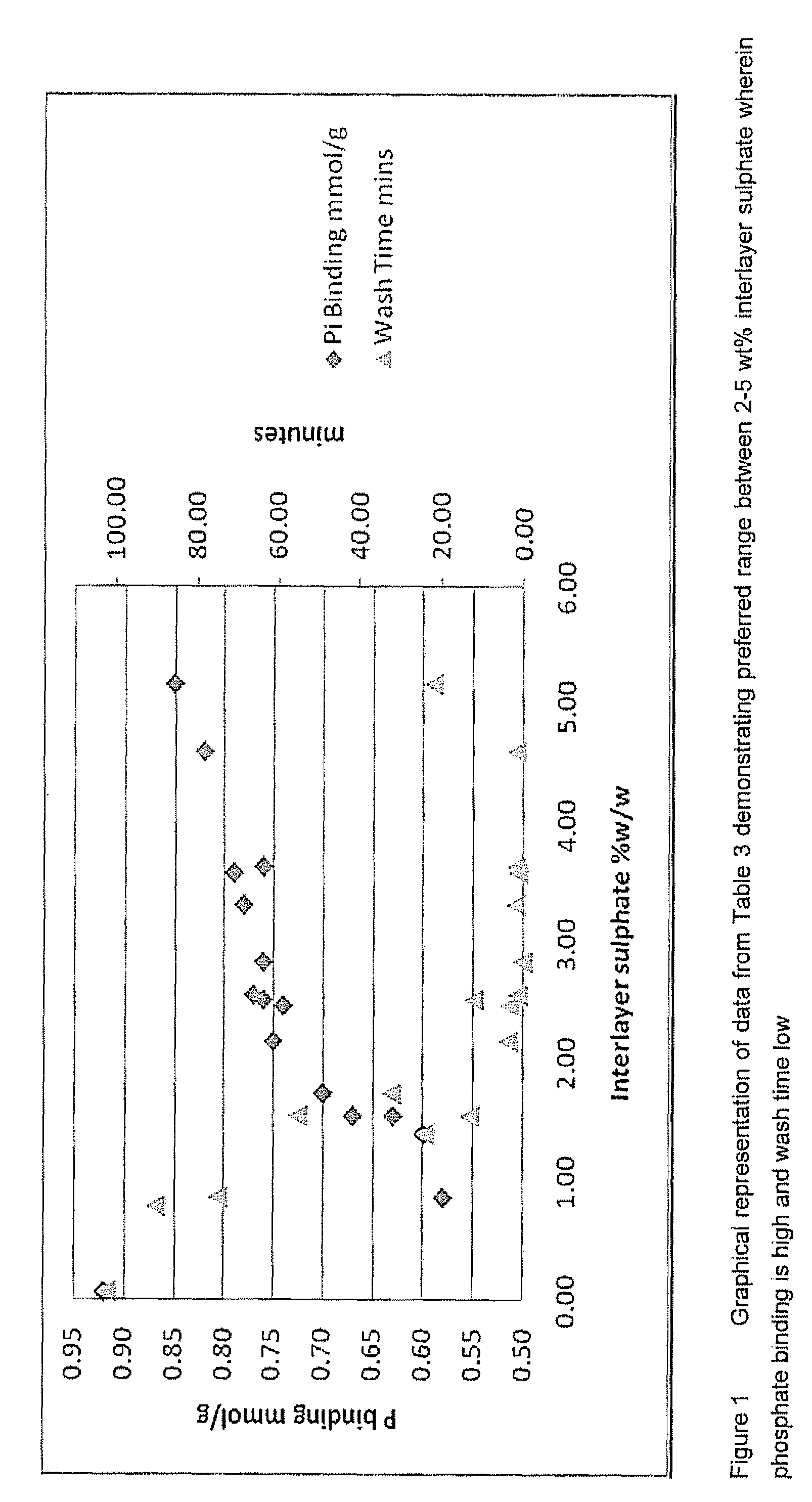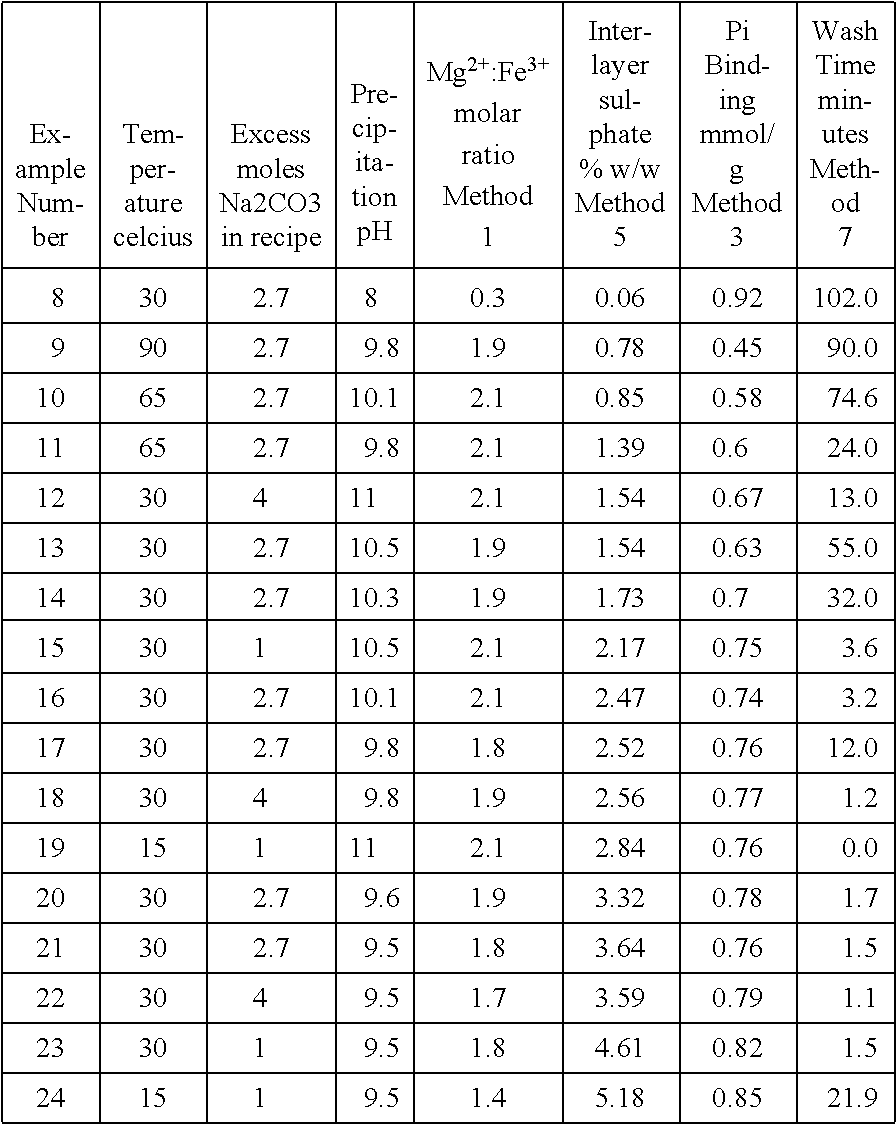Method
- Summary
- Abstract
- Description
- Claims
- Application Information
AI Technical Summary
Benefits of technology
Problems solved by technology
Method used
Image
Examples
example 1
[0303]Prepared by the method described below for preparation of approximately 250 gram of dried product targeted to have a Mg:Fe molar ratio of 1:1.
[0304]The actual molecular formula found by analysis was:
[Mg05Fe05(OH)2][(CO3)014(SO4)002.0.4H2O][Na2SO4]000
Wherein x=0.5, y1=0.14, y2=0.02, m=0.4, z=0.
[0305]Two starting materials, designated solution 1 and solution 2 were prepared by the method set out below such as to provide an Na2CO3 excess of 2.7 mole (in reaction equation 1).
[0306]Magnesium sulphate and iron sulphate were dissolved in AnalaR™ water to prepare solution 1. In a separate vessel sodium carbonate and sodium hydroxide were dissolved in AnalaR™ water to prepare solution 2. The weights used were calculated to give the desired ratio of metal cations.
[0307]For the preparation of solution 1, AnalaR™ water was weighed out into a vessel and stirred using an overhead mixer, into which was dissolved an appropriate amount of ferric sulphate hydrate (GPR grade). Once dissolved, m...
example 2
[0316]Preparation method as for Example 1 but targeted to have a Mg:Fe molar ratio of 2:1
[0317]The actual molecular formula found by analysis was:
[Mg054Fe036(OH)2][(CO3)y1(SO4)003.0.20H2O][Na2SO4]z
example 3
[0318]Preparation method as for Example 1 but targeted to have a Mg:Fe molar ratio of 3:1.
PUM
| Property | Measurement | Unit |
|---|---|---|
| Temperature | aaaaa | aaaaa |
| Temperature | aaaaa | aaaaa |
| Temperature | aaaaa | aaaaa |
Abstract
Description
Claims
Application Information
 Login to View More
Login to View More - R&D
- Intellectual Property
- Life Sciences
- Materials
- Tech Scout
- Unparalleled Data Quality
- Higher Quality Content
- 60% Fewer Hallucinations
Browse by: Latest US Patents, China's latest patents, Technical Efficacy Thesaurus, Application Domain, Technology Topic, Popular Technical Reports.
© 2025 PatSnap. All rights reserved.Legal|Privacy policy|Modern Slavery Act Transparency Statement|Sitemap|About US| Contact US: help@patsnap.com


